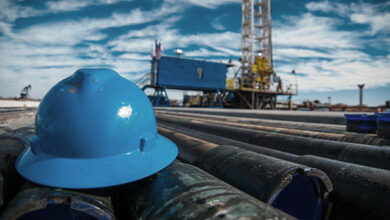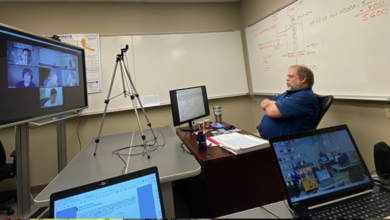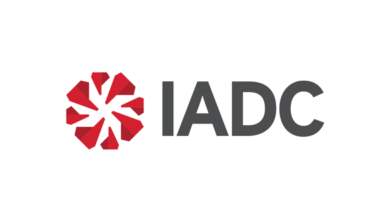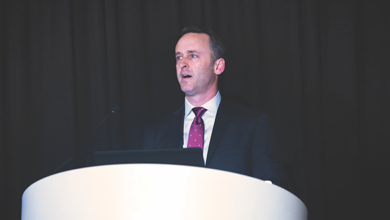Drilling & Completion Tech Digest
Dual-activity rig enables dual-drilling operation in Norway
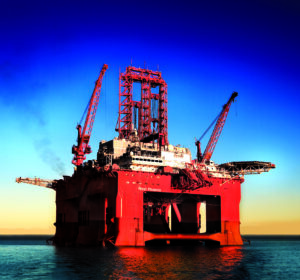
Neptune Energy recently conducted the world’s first dual-drilling operation from an integrated subsea template structure at the Fenja field in the Norwegian North Sea.
In conjunction with the startup of the Fenja drilling campaign in April, Neptune teams maximized the capabilities of Seadrill’s West Phoenix semisubmersible to drill two wellbores at the same time.
While rigs with two drilling facilities are typically used to drill one well at a time, with one drilling center supporting the other, “in the instance of our operations, we decided to use these facilities independently to concurrently drill two wellbores,” said Thor Andre Løvoll, Director of Drilling and Wells in Norway for Neptune.
“The experience of dual drilling on Fenja has been positive, and we could see this method adopted as a more standard practice in the future. The current challenges in the market encourage us to rethink the way we do things safely, efficiently and with lower carbon emissions,” he continued.
Neptune had recently conducted dual-drilling operations on an exploration well on the Norwegian Continental Shelf (NCS), and the experience was applied toward the Fenja subsea field development.
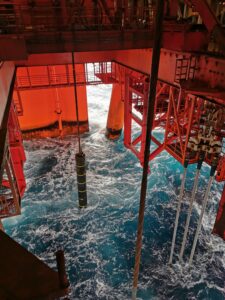
Fenja is Neptune’s first operated development project on the NCS and is estimated to contain 97 million BOE. At its peak, Fenja is expected to deliver approximately 40,000 BOED. Located in the Norwegian Sea 120 km northwest of Kristiansund in a water depth of 320 m, the subsea field will be developed as a tieback to the Njord-A platform. At 36 km, it will be the world’s longest electrically trace-heated pipe-in-pipe subsea development.
Blockchain consortium completes Bakken pilot
The Offshore Operators Committee Oil & Gas Blockchain Consortium recently completed its first pilot leveraging blockchain technology. The project, developed in partnership with Data Gumbo, proved the viability of using a blockchain platform for automating produced water haulage from field reading to invoice payment. The pilot was executed on five Equinor wells in the Bakken in North Dakota. Initial results included:
- Reducing the workflow from 90-120 days to between 1-7 days, and from 16 steps to seven steps, requiring zero manual intervention;
- Automatically validating 85% of all volume measurements against data from multiple parties;
- Using the validations to automatically trigger the execution of related invoice transactions; and
- Identifying a potential 25-35% reallocation of resources versus current business processes.
Produced water and commodity haulage invoicing and reconciliations are typically manual processes inaccessible between parties, with data self-reported or stuck in non-interoperable silos. By providing a single record of truth, the blockchain-based network synchronizes data across parties for greater transparency.
The consortium plans to continue building this solution and expand it to other commodities and services.
DNV GL, ABB to collaborate on digitalization roadmap
DNV GL and ABB have signed a memorandum of understanding (MOU) to accelerate digitalization in the maritime industry.
The MOU will see the two organizations work together on a Digitalization Roadmap to examine how the maritime industry can benefit from the greater availability of data, interconnectivity of systems, data analysis, and new technologies, such as artificial intelligence and machine learning.
The COVID-19 crisis “has the potential to trigger a lot of innovation and new ideas throughout the maritime world, leading to a renaissance for the whole industry,” said Knut Ørbeck-Nilssen, CEO of DNV GL – Maritime.
Remotely operated survey operations completed offshore Suriname for Apache
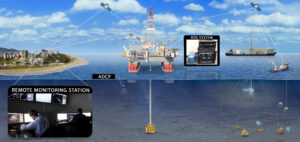
Oceaneering International announced in May its Remotely Operated Survey (ROS) group completed an integrated rig services campaign for a major operator offshore South America. The company had been contracted by Apache in June 2019 to provide integrated rig services on the Noble Sam Croft drillship. The work scope included the provision of ROS, ROV and acoustic doppler current profiler (ADCP) for a potential three-well campaign. The ROS and ADCP systems were mobilized and commissioned on the drillship in 2019. The rig then transited to Suriname, where it began operations in early fall.
The ROS system eliminates the need to remobilize survey equipment and personnel for subsequent moves. Oceaneering surveyors in its Remote Control Monitoring Stations (RCMS) communicate with rig personnel and company representatives during rig move activities.
The ADCP systems on the drillship are maintained, recovered and deployed by the ROV crew. This minimizes personnel onboard. Oceaneering has now surpassed 150,000 hours of successful ROS operations.
Chris Echols, Global Business Development Manager, Survey Services, said, “During this unprecedented global pandemic, the ROS and ADCP services have added value where personnel movements have been hampered by local restrictions, which vary country to country. By utilizing ROS, Oceaneering’s services remain unaffected by these restrictions.”
Coating prepares rig for harsh-environment work
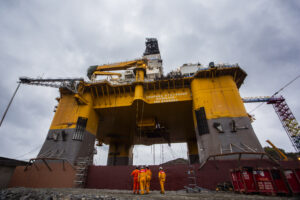
Jotun is collaborating with Odfjell Drilling to provide an anti-fouling and topside coating solution for the Deepsea Stavanger dual-derrick semisubmersible, in preparation for the rig’s anticipated assignment offshore South Africa for Total. The coating is expected to help address a combination of high fouling intensity and strong ocean currents in the region. Heavy fouling on the rig hull could increase frictional drag and make it harder to maintain the correct position, in turn creating a demand for greater thruster power.
Cut-and-recover operation saves rig time for Wintershall
Neodrill and Baker Hughes have performed the world’s first cut-and-recover operation for Wintershall Dea Norge in the Norwegian Sea. Rig time was reduced by an estimated 12 hours, with work to cut the surface casing moved off the critical path of the rig schedule.
The project enabled the rig to abandon the well site as soon as the cement plugs were in place. The surface casing was then cut from a vessel using Baker Hughes’ new casing-cutting tool. This optimized process removes the need for rig time in the abandonment phase.
The cut-and-recover service will be offered as part of Neodrill’s CAN-complete, enabling the company to offer a full service engineering, procurement, construction and installation (EPCI) solution to manage all aspects of a CAN installation. The company expects the solution can help to reduce operators’ internal resource requirements and overheads.
“The new recovery method is a continuation of the environmental focus and the cost-effective way of running this project,” said Tore Øian, Head of Drilling for Wintershall Dea.
COVID-19 sparks rise in demand for remote rig inspections
Bureau Veritas has reported a 900% rise in demand for the remote inspection of offshore assets and equipment since the outbreak of the COVID-19 pandemic.
Requests for remote inspection, certification, examination and verification services have escalated as businesses seek to keep employees safe from the coronavirus. A number of remote inspection solutions are already in progress for operators and oilfield service companies, and there has been an excess of 20 additional requests since the start of this year, according to Bureau Veritas.
Through the use of mobile cameras and existing personnel, employees can carry out these essential services remotely onshore, limiting close contact and reducing the need for travel.
An immediate health and safety benefit of remote inspections is the reduced potential for exposure to the coronavirus for clients and Bureau Veritas staff.
2020 OTC Spotlight on New Technology Awards highlight industry innovations
Although this year’s Offshore Technology Conference (OTC) was canceled due to COVID-19, 12 technologies were announced in May as winners of the Spotlight on New Technology awards.
- CAROL is a catalyst unloading robot for offshore, LNG, gas plant and refinery vessels. Produced by Advisian Digital, the robot effectively replaces the requirement to have a human inside the vessel during catalyst vacuuming operations.
- Baker Hughes’ SureConnect intelligent wet-mate system enables connection and re-connection of upper completion components to the lower completion with hydraulic, electric and/or fiber-optic lines, allowing operators to achieve real-time, interventionless monitoring and control across the wellbore.
- The Aptara lightweight compact tree from Baker Hughes adapts as needs change through the life of field. With a significantly reduced footprint compared with traditional deepwater subsea trees, the tree has 50% less weight and the potential to reduce CAPEX and OPEX by more than 50%.
- Bosch Rexroth’s High Force and Low Voltage Subsea Valve Actuator provides high actuation forces with limited electric power supply. This enables the implementation of the All Subsea Factory in brownfields using the available Subsea Instrumentation Interface Standard.
- Dril-Quip’s VXTe vertical subsea tree system empowers work that is smarter, faster, safer and permanently reduces cost. Installing the non-oriented tubing hanger into the wellhead enables drilling and completions in a single campaign, thereby eliminating BOP trips.
- The Xaminer Magnetic Resonance service from Halliburton is a 35,000-psi-rated magnetic resonance sensor for wireline. It has a sharp focus on the future of nuclear magnetic resonance wireline logging for deepwater, unconventional and mature assets.
- SWIT from National Oilwell Varco (NOV) is a full-scale sulfate removal and low-salinity plant, designed for long-term continuous operation at the seabed for IOR and EOR purposes. By employing proprietary technology in combination with process simplifications in this configuration, the system can operate for more than 30 months maintenance free.
-
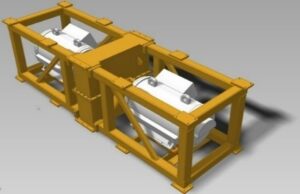
The PowerBlade system regenerates energy from operations like heave compensation. NOV’s PowerBlade Energy Recovery System receives, stores and provides regenerated energy based on operations like heave compensation. Further, it reduces power peaks “felt” by the generators and possible power bottlenecks, thereby reducing fuel consumption and boosting equipment performance.
-
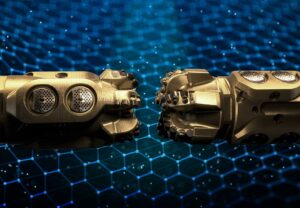
The NeoSteer at-bit steerable system integrates the cutting structure with the steering system. The Schlumberger NeoSteer at-bit steerable system is a directional drilling innovation that integrates the cutting structure with the steering system. The system is capable of drilling both high-dogleg severity curve sections and straighter lateral sections in a single run.
- The Ora intelligent wireline formation testing platform from Schlumberger integrates new downhole digital hardware and cloud-native software, allowing the efficient evaluation of reservoirs and the provision of real-time information.
- The Siemens AM Monitor uses machine learning algorithms to impartially evaluate the recoating during the printing of a 3D-printed component, with a speed and accuracy that cannot be matched by humans.
- TechnipFMC’s Subsea Power Dis-tribution Station eliminates topside expansion needs, reducing subsea boosting costs for brownfield projects.
In addition to the 12 winners, OTC also announced six technologies that have received this year’s Spotlight Small Business award.
- DarkVision’s HADES-F technology uses a next-generation high-resolution acoustic imaging head mounted on an articulating remotely controlled robotic arm, providing sub-millimetric measurements, images and 3D reconstructions in real time.
- Rocsole’s Liquid In-Tank Inspection technology and solution are used to improve the performance of crude oil operational tanks. Detailed imaging of the emulsion layer can be combined with AI prediction tools for improved oil quality.
- Rolloos’ Red Zone Service keeps people safe and optimizes performance by combining advanced computer vision, AI, human-machine integration and classical change management.
- Upwing’s Subsurface Compression System is an artificial lift tool that increases gas production and recoverable reserves, removing liquid loading from both the vertical and horizontal sections of the wellbore.
- The Seatooth SmartClamp is a smart wireless subsea structural monitoring system from WFS. The device measures strain, acceleration, pressure and temperature and uses edge computing to calibrate fatigue models with real-time data at the sensor level. It then transfers data through the air-water boundary to a topside receiver.
- WFS’ Subsea Cloud Computing Network creates a subsea Wi-Fi hotspot, and its Seatooth smart devices with edge computing and low-power management systems can wirelessly connect to the network or cross-pollinate data using AUVs or ROVs for data harvesting.

